How to vent a bathroom with no outside access
3 Key Takeaways:
🚀 One solution to stop moisture in a bathroom with no outside access is to install a ceiling vent.
🚀 The moisture and steam will work their way through your attic and your roof.
🚀 Other measures to ensure proper ventilation in a bathroom with no outside access include adding a floor duct vent, expanding existing ducts, installing commercial ductwork.
Having proper ventilation in any space is important. Whether you are thinking of bathroom ventilation or basement ventilation system; installing the correct ventilation systems is crucial. A bathroom with no outside access is a little tricky to install commercial ductwork and ventilation.
In this article, we will discuss how to vent a bathroom with no outside access. You must remember that there is always a solution to improve any area with poor ventilation. A poorly ventilated bathroom is a source of excess moisture levels, mold growth, musty odor, and other pathogens. Here are some measures in which you can ensure proper ventilation in a bathroom with no outside access.
An inadequately ventilated bathroom has the following signs:
A poorly ventilated bathroom can be identified by a few indicators. When the bathroom has poor air circulation, lack of sunlight coming in, and no ventilation to allow the moist bathroom air to escape, the following indicators are inevitable.
Excess moisture levels
It is absolutely crucial to remove moisture from the bathroom. Excess moisture levels are common in any bathroom. Almost every bathroom will have sinks, tubs, and shower stalls. A bathroom with no outside access and poor ventilation will have lingering moisture. The moist bathroom air that cannot leave the space due to lack of proper ventilation will lead to lingering moisture.
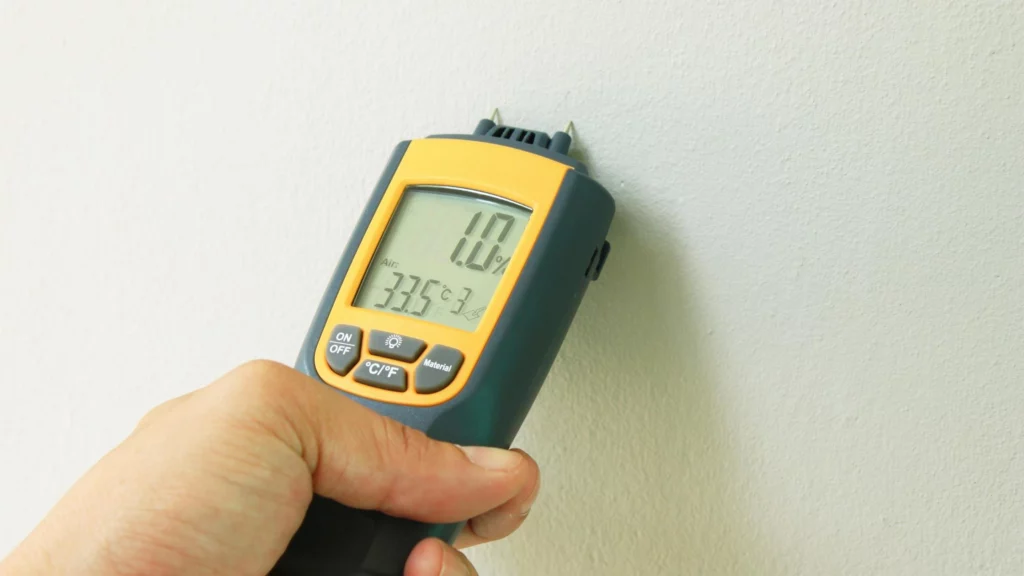
When you do not vent excess moisture, you can notice a visible increase in the moist air in the bathroom. You must focus on getting the right vent fans to remove moisture from the bathroom with no outside access.
Stuffy and moist air
A bathroom with no outside access and poor air circulation will create a heavy atmosphere. The humid air in the bathroom will only aggravate the stuffiness. When there is no access for fresh air to circulate in any space, the bathroom air will create stuffiness making it difficult and uneasy to stay in.

Mold
Mold growth in the bathroom is one of the common and serious signs of poor bathroom ventilation. Mold and mildew thrive in any space that has high moisture. You must work on installing vent fans, exhaust fans, air purifiers, or dehumidifiers at the sign of mold to remove moisture content from the air.
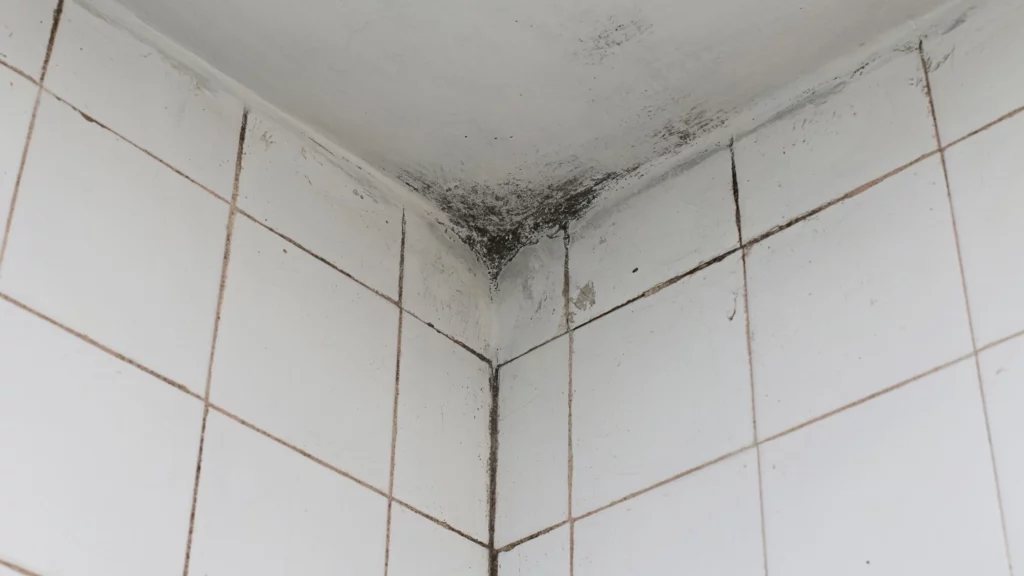
Title joints, floor joints, bathroom ceiling vents, and other nooks and corners of the bathroom are prone to mold. Keep a regular cleaning routine in place to remove moisture, mold, and mildew from bathroom ceilings, floor joints, and tiles.
Ceiling
Do you notice a different color or stain on your bathroom ceiling, exterior wall, or title? A change of color in the exterior wall, floor titles, or even the bathroom ceiling indicates that the bathroom’s ventilation system must be improved to remove excess moisture content from the air and the space.
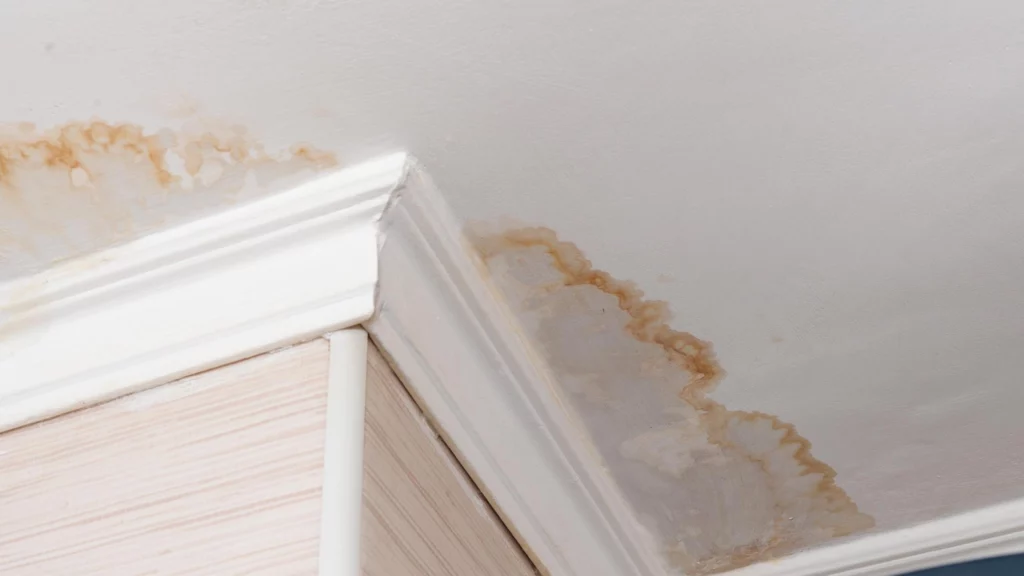
Odor
Another common and hard-to-tolerate problem in having poor ventilation systems for bathrooms is odor. Although it might seem easy to eliminate odors using a strong air freshener or bathroom air freshener, the solution to remove odors is only temporary.
Most combined toilets tend to have the problem with bad odors. A combined toilet with a shower will always have a lingering bad odor. To eliminate odors in such a bathroom or toilet, you must work to improve the bathroom ventilation system. Installing an exhaust fan or dehumidifier can be the solution to remove odors, however, you must try to get proper ventilation in a bathroom with no outside access.
Best Ways to Vent a Bathroom with No Outside Access:
Here we have some of the best tips on how to vent a bathroom with no outside access. It is important to remember that there are many creative methods of using bath fans to ensure proper ventilation and fresh air circulation even when the bathroom’s ventilation is poor. You will certainly need the assistance of a bath fan and a certified HVAC contractor. Do not attempt to do any changes to the bathroom’s ventilation without consulting with an HVAC contractor.
Ceiling vent
Have you come across ceiling vents? If not, you must consider investing in a ceiling vent fan or ceiling vent. Any bathroom without access to the outside will benefit from a ceiling vent. The best way to help the humidity and moist air escape from the bathroom or toilet space that does not have outside access is to install a ceiling vent.
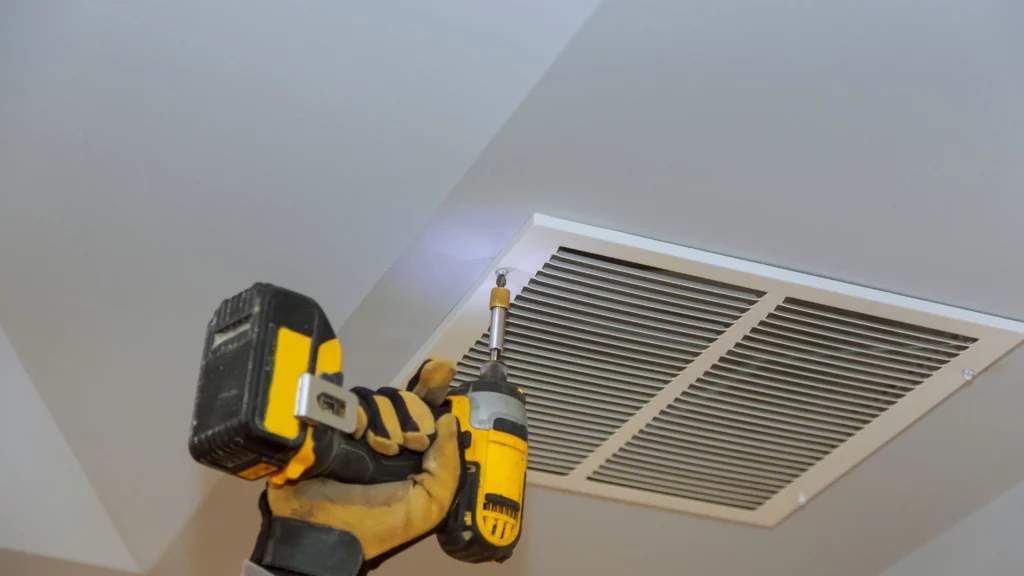
A ceiling vent machine is quite similar in function to an open window. Another interesting addition to the ceiling vents nowadays is adding a light fixture to them. You can use the ceiling vent to remove moisture and also use the light fixture. Installing a ceiling vent fan or ceiling vent will require professional assistance from an HVAC contractor.
Floor duct vents
Is your bathroom located away from the exterior wall? With a bathroom located away from the exterior wall, you will have no chance of installing ceiling vent fans. For such a bathroom the alternative solution would be duct vents.
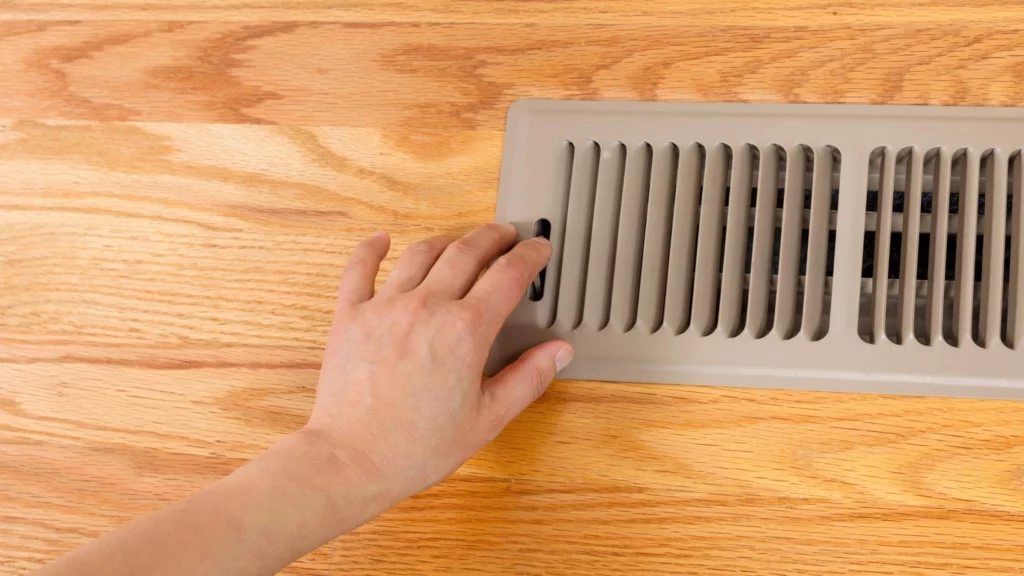
A floor duct vent is a machine that makes use of floor space. With a floor duct vent, you can be confident in removing bad air from the bathroom space. The floor duct vent will make use of floor grates for moisture removal. Moisture and odor removal is achieved with floor vents. However, a ceiling vent is anyway a more efficient option in comparison to floor duct vents. You can consult with your HVAC contractor to enquire if the bath fan can be extended through the floor vents.
Bath fan
Reach out to your HVAC contractor to discuss bath fan installation. With a bath fan and the right ventilation, you will be able to direct the odors and moisture out of the bathroom to the closest exit, making sure that the installed showers and other areas of the bathroom remain moist-free.
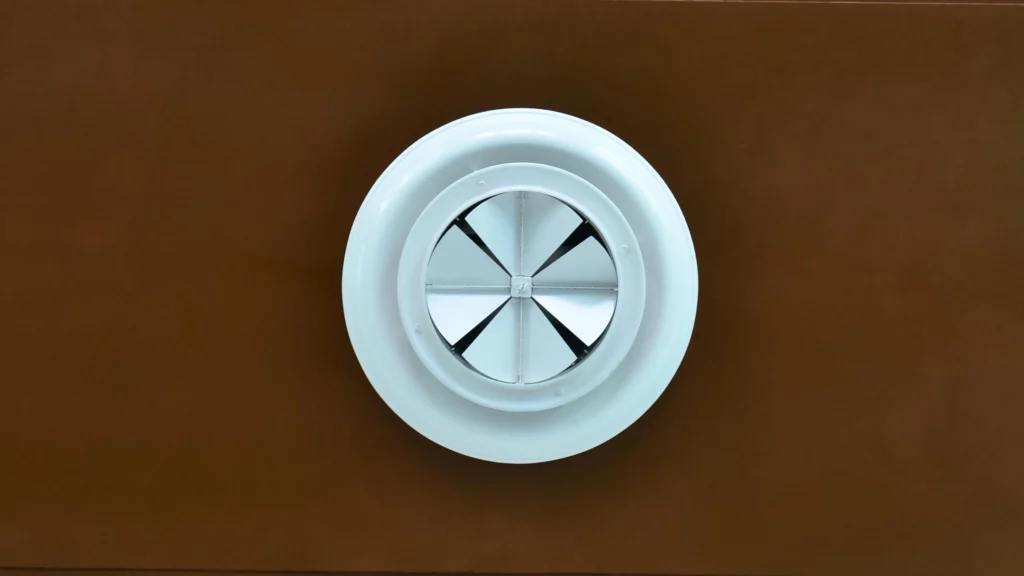
You must note that the fan’s size is measured in cubic feet per minute or CFM. This measure refers to how much air the bathroom fan is capable of removing in one minute. How much air can be removed by the fan or the cubic feet per minute must be calculated correctly in relation to the size of the bathroom and the frequency of usage. If the frequency of bathroom usage is more, then the cubic feet per minute will also have to be slightly higher.
Recirculating fan for a half bath
Another popular option is recirculating fans. Using a recirculating fan for half bathrooms is also used to eliminate odors. Since half baths do not have installed showers in them, it is easier to remove unpleasant odors and even moisture from half bathrooms using recirculating fans.
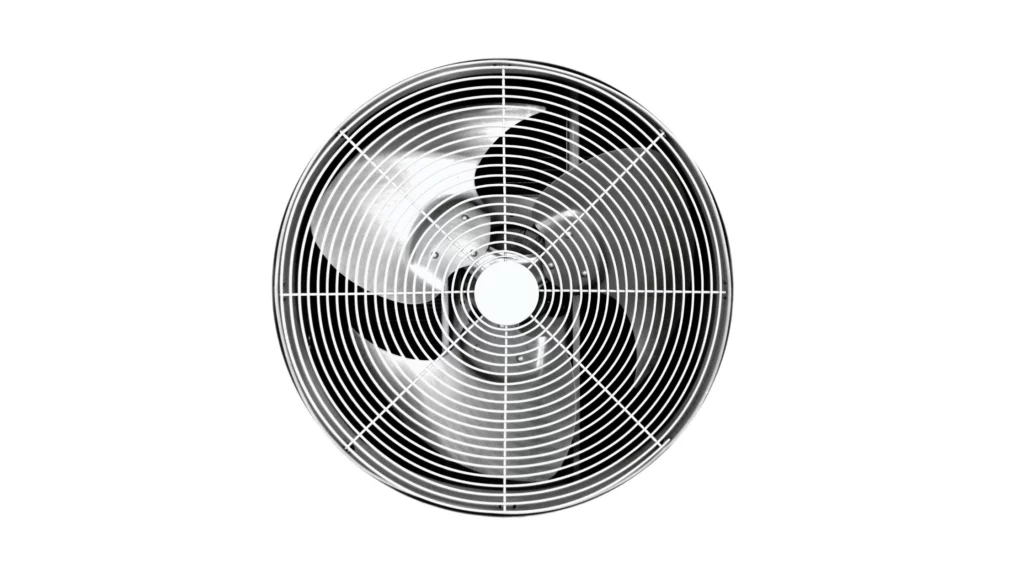
The point to remember while using recirculating fans for half baths is that they are incapable of functioning like an exhaust fan. A recirculating fan or a bathroom vent fan with an automatic humidity sensor is only good options for a half bath for odor and moisture control.
Expanding existing ductwork
If nothing else works, a drastic measure that can be taken is replacing existing ductwork. You can change everything from the current vent fans and replace how the system with ventilation fans functions by working on the existing ductwork. Larger ductwork and a larger bathroom vent fan will improve the ventilation of the bathroom space. This step is definitely time and cost-consuming.
Can you install a bathroom fan without ductwork?
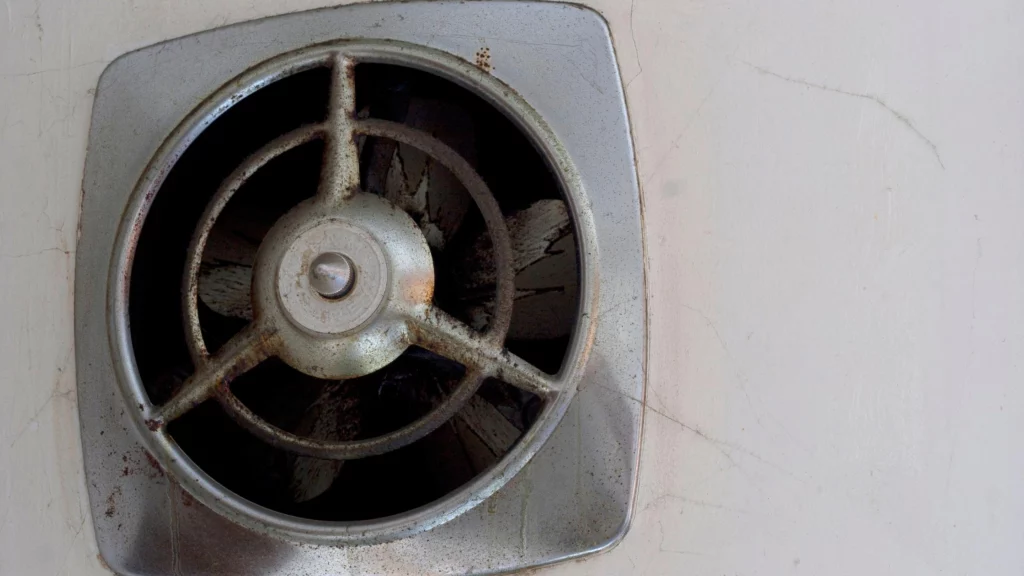
Yes! You can install a bathroom fan in a bathroom without doing any ductwork. This can be done with a ductless fan. Working just like a ducted fan, occupying less space, and being available in a variety of options customers resort to a ductless fan to ventilate the bathroom. It can be easily installed in any area of the bathroom.
What size ventilation fan do you need for a bathroom?
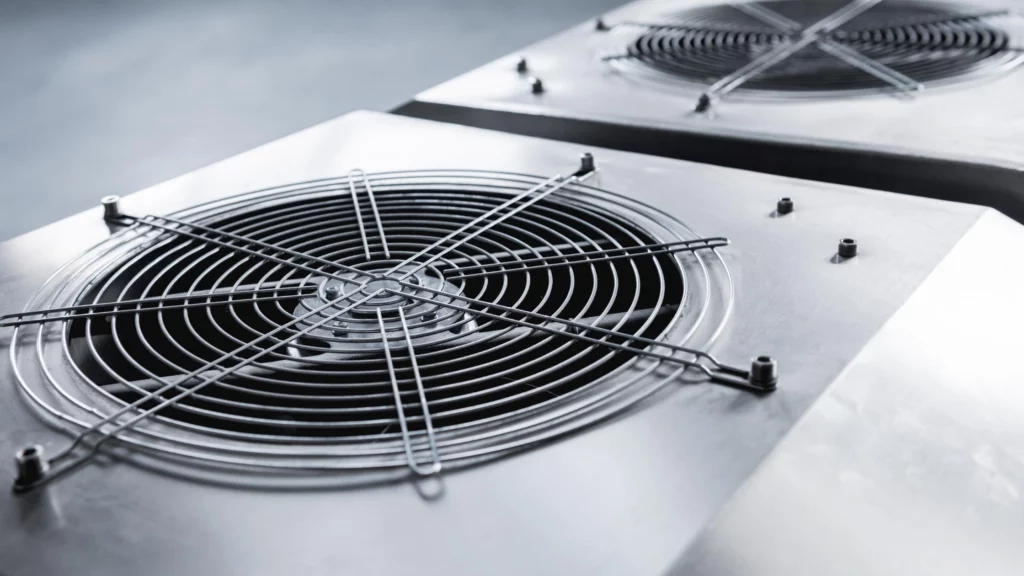
The size of ventilation fans that are required for the bathroom must be carefully selected. The common figure that works for a bathroom vent fan in most cases is one CFM per square foot of bathroom area. Never hesitate to reach out to a professional for any further clarifications on installation or selecting the right size of any bathroom fans, exhaust fans, recirculating fans, or any other household fan.
FAQ Section
1. How much does it cost to install an exhaust fan in the bathroom?
The cost of installation of an exhaust fan, inline fan, it any household fan can vary based on the service type and extent of work required. On average, it can cost anywhere from $240 to $548.
2. What ventilation is required for a bathroom?
As aforementioned, depending on the bathroom space and your requirement, you can select any type of vent fan or ventilation system that will work. Exhaust fan, bathroom vent fan, ceiling vent fan, inline fan, floor vent fan, commercial ductwork, keeping the bathroom door open, etc., are a few of the many ways to ventilate bathrooms.
3. Is it normal for mold to grow in the bathroom?
Bathrooms are the perfect environment that supports mold growth. It is common for mold and mildew to find their home in a bathroom. However, it can be prevented successfully and also removed when it becomes a threat.
4. Do You Need a Professional to Vent a Bathroom?
Hiring a professional assistant to install any type of vent fan and commercial ductwork is recommended.
5. Do you have to replace a bathroom vent fan often?
Replacing a bathroom vent fan can depend on the durability of the material and the company. Most companies that manufacture vent fans assure that they last up to 10 years. However, in the case of repairs beyond restoration, it is suggested to replace the vent fan.
6. Is a dehumidifier better than a fan for a bathroom?
A dehumidifier for a bathroom is recommended to collect moisture and remove it from the bathroom. It can also help to remove allergens and reduce mold growth and other musty odor. But, a dehumidifier cannot exhaust air or ventilate a bathroom like bathroom fans. The purpose and necessity matter when you choose between a vent fan and a dehumidifier.
7. How big of a dehumidifier do you need for the bathroom?
Considering that bathrooms, even the larger ones, are closed spaces, a small portable dehumidifier of 30 pints is believed to be the right choice for a bathroom.
Wrapping Up
With this, we end the article here. We trust you learned how to vent a bathroom with no outside access. Share with us in the comments below if your bathroom has innovative ventilation methods to exhaust air and which ventilation works best for your home.

About The Author
Olivia — a self-confessed air quality addict — is a home climate enthusiast, fresh air advocate, and someone with deep personal experience and knowledge about mold extermination. Her work was mentioned in countless notable humidity publications. Previously she was an editor at Mold Remediation.